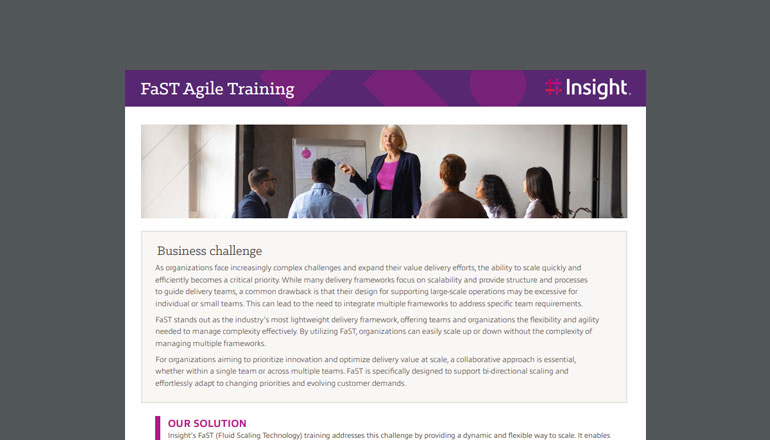Blog Positioning Your Teams for Successful SAP S/4HANA Migration
By Insight Editor / 13 Feb 2024 / Topics: Change and training

For more than 30 years, companies have relied on SAP enterprise resource planning software to run multiple areas of their business. And in just three years, these companies will face the end of mainstream support for SAP’s current version, ECC, and will need to migrate to the newest version: SAP S/4HANA.
Regardless of your industry, the move to SAP S/4HANA will take a big lift from all sides of the company. It’s time to ensure the people side of your organization is equipped with the right tools to succeed in this new environment.
In this article, learn how to position your teams for a successful SAP S/4HANA migration so you can be ready when the change hits.
Three phases to laying the groundwork for SAP S/4HANA
The move to SAP S/4HANA is more than a technical upgrade; it’s a transformational initiative that organizations need to plan for. Laying the groundwork as soon as possible is critical to successful migration.
Many leaders benefit from a Change and Training (C&T) approach when preparing their teams for the big move. Training and development preparation should focus less on what SAP S/4HANA does, and more on who and how individuals will be affected.
Here’s how to get started in three phases.
Phase one: Engage the right teammates.
Engaging key stakeholders from various points of the business will enable you to reach further into different teams and ensure the right preparations are made. Loop in members from networking and security teams, data teams, project teams and, most critically, leadership teams. Aligning leadership is instrumental for your SAP S/4HANA migration efforts to stick. Leaders and project team members make crucial decisions for the organization and therefore must fully understand S/4HANA’s capabilities and how this new tool will affect roles in the business. Together, this team of stakeholders need to be educated on the migration’s requirements and what it takes to get their teams prepared for the journey ahead.
Phase two: Understand how changes may affect your team & plan accordingly.
Now that your team of key stakeholders has been assembled, you can take the time to understand the migration and its requirements ahead of time.
Start with assessing daily processes and recognizing how SAP S/4HANA may impact them. With a focus on process, evaluate how you plan on using S/4HANA to run everyday operations previously run on ECC. This analysis should consider every team in your organization (and those that may be impacted outside the organization) and how they might leverage the new technology.
To analyze current and future parallels, ask questions like:
- What are we getting today out of our SAP system?
- How does the new system help address those needs?
- What do we need to do to align to the new system for now and beyond?
Note: Moving to SAP S/4HANA is truly a transformational event for most organizations, and it goes far deeper than just running transactions in the SAP system. While SAP ECC is held on-premises, SAP S/4HANA is set to be hosted strictly on the cloud. This may be a big leap for organizations operating primarily on-premises. Understanding how the move to the cloud will affect teams across the business and their processes ahead of time is crucial to a successful migration.
Phase three: Plan for sustainability.
You’ve now planned for how SAP S/4HANA will affect teammates across the organization, but how can you ensure your preparation efforts were not in vain?
When it comes to successful migration, go-live isn’t the finish line — sustainability is.
Stakeholders should start thinking about sustainment even before the migration begins. The start line isn’t just standing up the tech — it’s understanding how the technology will be maintained, leveraged and optimized by users long term. For example, consider what systems and processes should be established to ensure the technology can be used to train users over time as people onboard the system. How will system updates and new change requirements be processed? How will continuous feedback be incorporated? How can super users and business process owners drive process and technology optimization?
One way to make sure these details are covered is by setting up a Center of Excellence (CoE) team committed to the long-term success of SAP S/4HANA.
Insight for successful SAP S/4HANA migration
The long-term success of your SAP S/4HANA migration lies in your organization’s ability to holistically prepare for it. This involves an early understanding of how the change will affect the people side of your business and, in response, setting up systems, processes and teams to ensure the sustainability of your initiative. Insight change management experts are here to help you connect the dots and set your migration up for success.




